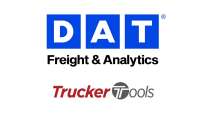Staff Reporter
Regional Planners Should Weigh Local, Logistical Needs, Experts Say

[Stay on top of transportation news: Get TTNews in your inbox.]
Regional planners should balance the interests of freight haulers and local residents as they consider transportation needs, according to experts.
Daniel Studdard, principal planner at the Atlanta Regional Commission, said zoning is key. Studdard participated in a webinar April 15 hosted by the Federal Highway Administration, which was part of the agency’s Talking Freight seminar series. He advised planners to be mindful of incompatible land use, citing the example of an intermodal facility that was constructed directly across from a residential development.
“Get ahead of it if you can,” Studdard said. “It’s tough to fix that once it happens.”

Bradley
Becky Bradley, executive director of the Lehigh Valley Planning Commission, acknowledged that many residents don’t like large volumes of freight flowing through their communities. Pennsylvania’s Lehigh Valley, 65 miles north of Philadelphia and 89 miles west of New York, is an important area for warehousing space and freight movement. Bradley identified seven distinct freight districts within the region.
She noted that freight is inherently multimodal, and urged listeners to think about the different modes of transportation associated with a shipment’s journey, such as trucks, trains, vessels and airplanes. Although she acknowledged that trucks usually will have to travel near residential areas at some point, Bradley said industrial districts function better if they are positioned near networks of major routes.
Compare each of the presidential candidates' plans for addressing America's infrastructure needs. See our Candidate Infrastructure Tracker.
“Freight doesn’t generally begin and end where you have your freight districts,” Bradley said. “You’re going to have trucks in those adjacent residential areas. Freight doesn’t care what community it’s in.”
Studdard and his team are creating freight cluster plans, which assess the needs of communities that experience heavy freight activity. The plans take into account an array of data on local issues such as truck parking, roadways, crashes, signage and bridges.
Besides analyzing data, Studdard stressed the importance of conducting thorough field reviews. When he was out in the field taking photos for a presentation he was working on, Studdard encountered a situation in which two trucks were in a standoff at an intermodal facility. One was trying to enter; the other was trying to exit. There was no room to back up because passenger vehicles had queued up on the road leading to the facility. After the trucks finally negotiated around each other, two other trucks immediately ran into the same problem. The passenger vehicle drivers, meanwhile, got frustrated and started driving on the side of the road.

Studdard
“Data’s only going to tell you part of the picture,” Studdard said. “We really stress this as a big part of these plans, to go out in the field and see what’s going on.”
Although Studdard said the metropolitan Atlanta region has experienced a large amount of demand for industrial development, he acknowledged the coronavirus pandemic has “thrown a monkey wrench into everything.” He said e-commerce continues to have a big impact, especially during the pandemic, because people generally are avoiding stores.
The Lehigh Valley and Atlanta are expected to see growth in the coming years. By 2040, the flow of freight in the Lehigh Valley is projected to increase by 96%. The Atlanta Regional Commission projects that the metro area will add 2.9 million people by 2050, bringing the total population to 8.6 million.
Want more news? Listen to today's daily briefing:




